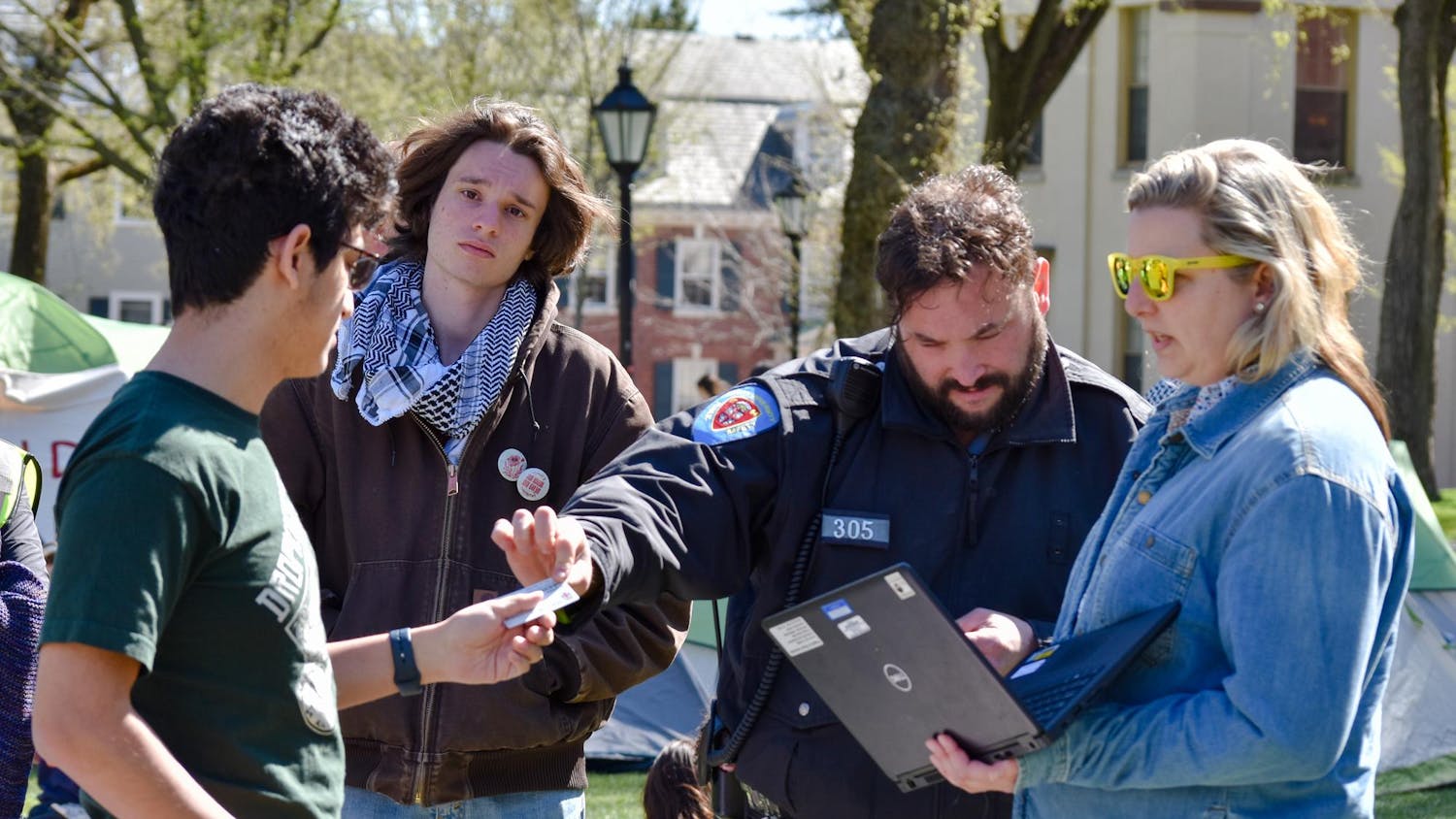Homeless individuals in Rhode Island who have used emergency medical services feel they were treated like “non-persons” by medical staff, according to a 2010 survey conducted by the Rhode Island Homeless Advocacy Project.
Members of student group Rhode Island Medical Advocacy Project, two members of the homeless community and Thomas O’Toole, the National Director of the Homeless Veteran Patient Aligned Care Team, gathered for “Teach-In: Intersections of Healthcare and Homelessness” to speak about the importance of improving conditions for the homeless in medical care settings Thursday. The group of around 20 assembled in Wilson Hall.
RIMAP, a six-person student group, is a part of Housing Opportunities for People Everywhere, a Swearer Center for Public Service organization.
Fifty-nine percent of homeless respondents to the RIMAP survey said they felt rushed through the treatment process while in emergency care, and 58 percent said they felt their treatment was guided not by their medical problems but instead by their homelessness, said Jacqueline Gallant ’15, a RIMAP coordinator, in the lecture.
Members of RIMAP believe health care is fundamental to ensuring the dignity of every person, Gallant said. Health care must be equal and unprejudiced for all, she said.
“I think that a lot of people at Brown want to go around and change the world, and what they don’t realize is that severe social injustices occur right on and off the Hill, and homelessness is one of them,” Jana Foxe ’16, a member of RIMAP, told The Herald.
Mistreatment of the homeless in medical settings, especially by EMTs, led to the creation of RIMAP, Gallant said in the lecture.
Barbara Kalil, the only non-student member of RIMAP, and guest Frank Nolan — both of whom were previously homeless — spoke about witnessing this discrimination first-hand.
Nolan went to the hospital last year after hurting his knee, he said. There were three homeless people in the waiting room before him, but the doctors took Nolan first.
“They’re homeless. We’ll get to them when we get to them,’ the nurse said after I asked why they were still in the waiting room,” Nolan said. This inequity did not sit well with him.
The discrimination Nolan witnessed is not a one-time occurrence, said Pearse Haley ’13, a former volunteer with the Rhode Island Coalition for the Homeless and a member of RIMAP. Most homeless individuals end up in the health care system because they have actual health problems, not because of drug-related problems, which people often assume, he said.
O’Toole works to create custom clinics for the homeless that integrate both medical and social services. These homeless-focused clinics have reduced the homeless’ use of emergency rooms by 72 percent and hospitalizations by 34 percent within the first six months, he said.
Kalil proposed another solution to decreasing homelessness. “I’ll tell you what the answer is: affordable housing. It is the key to it all,” Kalil said.
By educating students on the discrimination homeless people face in medical settings, RIMAP hopes that these students — some of whom will one day work in medicine — will help end mistreatment in the future, wrote RIMAP member Christina DiFabio ’14 in an email to The Herald.
RIMAP is working with the Rhode Island Department of Health to provide hospitals with sensitivity trainings for their staff members, which are similar to the teach-in, DiFabio wrote.
ADVERTISEMENT




